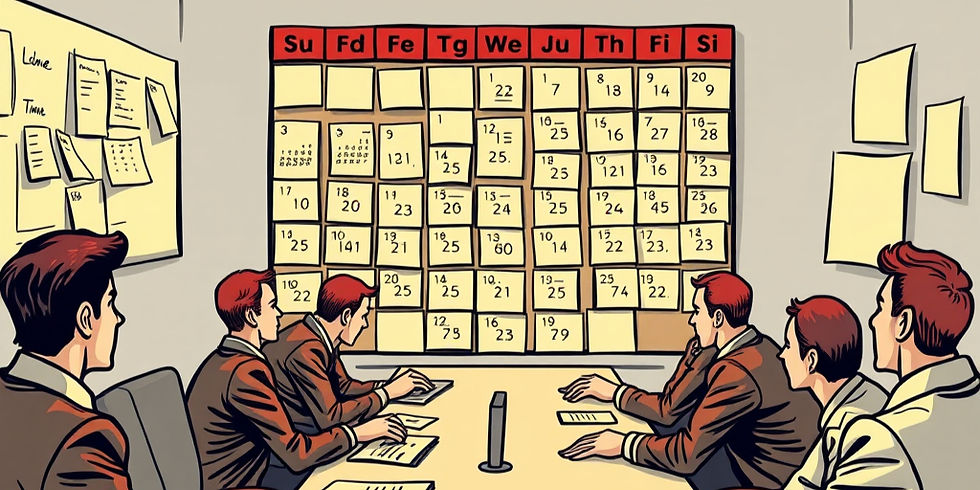The Meeting Cadence That Scales a 10-Person Service Team
- Aida Kosovic
- Oct 14
- 3 min read
If every meeting cost $3,000, would you still book it? In small teams, that’s not a stretch: 12 people × ~$150 loaded hourly rate × 90 minutes, plus prep and follow-ups. Once you see the “receipt,” you stop treating your calendar like a suggestion and start managing your meeting cadence like a budget.
Here’s the core idea: cadence follows capacity. Billable time funds the business; non-billable supports it. Meetings live in non-billable, so they only get what’s left after you set targets. Cap weekly meeting hours by role, and when the cap breaks, you trim meetings—not the work. That single decision keeps your meeting cadence honest.

A quick story. “Mark” runs a 10-person creative shop. Smart team, noisy calendar. He sat in daily standups, two project syncs per client, and a Friday all-hands that had drifted into story time. We priced a week of calls and found they were burning roughly a full-time salary—on meetings. We swapped status for pre-reads, made live time for decisions and blockers only, and simplified the weekly meeting rhythm into four touchpoints: a tight Monday priorities check, an async daily check-in that goes live only if blockers pile up, a mid-week 30-minute client risk review (red/yellow only), and a short Friday debrief. Two weeks later the team had two deep-work blocks a day, deliverables moved again, and they got back well over six hours per week across the team—every week.
Why it worked is simple. Good meetings earned their seat. Every invite named one accountable owner, a concrete outcome (decision, plan, or blockage removed), and a pre-read. If any box was empty, the meeting was. That tiny bit of friction quietly deleted most “just to align” calls and sharpened the ones that remained. When a big client asked for more live time, Mark priced the ask and offered options: a single weekly office hour for high-stakes decisions, plus async updates via doc comments and a 5-minute Loom. Face time became a premium, not a reflex.
Keep the same discipline each quarter. A light quarterly meeting rhythm prunes, it doesn’t inflate: which calls drifted from outcomes and should be cut, which decisions can move to async, who needs a different cap. No ceremony—just hygiene that protects focus, margin, and morale.
If you want a plug-and-play way to install this, grab our Meeting Rhythm Playbook. It’s a practical kit for the five meeting types small service teams actually run: daily, weekly, one-on-one, quarterly, and crisis. Inside: time-boxed agendas that end on time, clear roles (one owner per meeting), pre-read checklists to keep status async, decision logs so choices don’t vanish, and “cancel rules” for when a meeting no longer earns its slot. Drop it in and run it this week.
A few fun side effects show up fast: Slack quiets down. Designers stop living in 15-minute fragments. Account managers align in a shared dashboard instead of DM roulette. The founder’s hover-reflex fades because the calendar stops baiting them to hover. And when a real fire hits, there’s room to respond because the day isn’t welded to recurring calls.
If this clicked, you’ll also like our pieces on delegation meltdowns (and how to stop being your team’s help desk) and our 30-minute Weekly Staff Agenda that turns status into decisions without turning your team into stenographers. Different articles, same principle: meetings support momentum; they don’t manufacture it.
Download the free Meeting Rhythm Playbook to install the system and reclaim 6+ hours per week—and join the PeakPoint community for ongoing templates and teardown sessions.




Comments